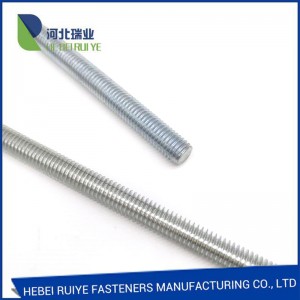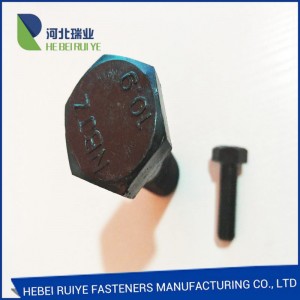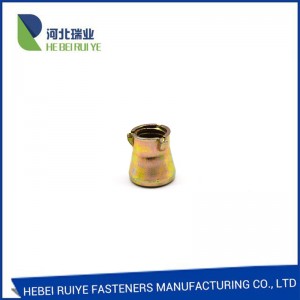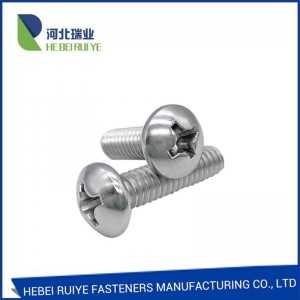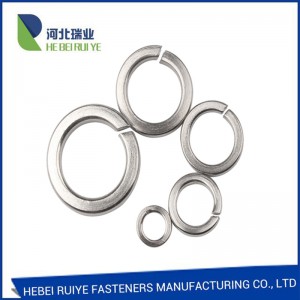Whiria Rod / Stud kanapu DIN975
Miro DIN975 tokotoko, kowiri tira 201 304 316 miro tonu momo tutaki kaiwhakarato. 1m 2m 3m roa rerekē ki diameter rerekē.
Tae: hiriwa / white puru
Te pikau taipitopito: nuinga Hua i roto i te pēke kirihou → Wood moenga;
Tukunga: I rangi, i te moana i te ratonga faaite ranei
ngā utu: T / T, uniana Western
He aha te mea miro tokotoko?
He tokotoko whiria, ano e mohiotia ana ko te whängai, ko te tokotoko āhua roa whiria e te i runga i pito e rua; kia whakawhānui i te miro me te roa oti o te tokotoko. E hangaia ana ratou ki te whakamahi i roto i te mānukanuka. Kei te maha i huaina tokotoko whiria i roto i te puka pae kararehe katoa-miro.
momo:
With respect to shape, stud bolts a.k.a. studs are categorized into 3 basic types: "Fully Threaded Stud Bolts", "Tap End Stud Bolts", and "Double End Stud Bolts". Each of these studs have different application. As name suggests, fully threaded studs have full body coverage with threads for full engagement of the matings nuts or similar parts. Tap end studs have threads at extreme ends of the body with unequal thread engagement length, while double end stud bolts have equal thread length at both ends. Apart from these there are stud bolts for flanges which are fully threaded studs with chamfered ends, and double end studs with reduced shank for special bolting applications. For studs that are not completely threaded, there are two types of studs: ki tonu-tinana tia, a haira tia. Tia Full-tinana i te shank rite ki te diameter nui o te miro. Tia haira i te shank rite ki te diameter te ware o te miro takahuri. E hangaia tia haira ki pai tohatoha taumahatanga axial. I roto i te whängai ki tonu i nga marohirohi e nui i roto i te aho atu i roto i te shank te taumahatanga.
Ētahi atu pātai taipitopito ranei haamauraa tēnā whakapā mai.




